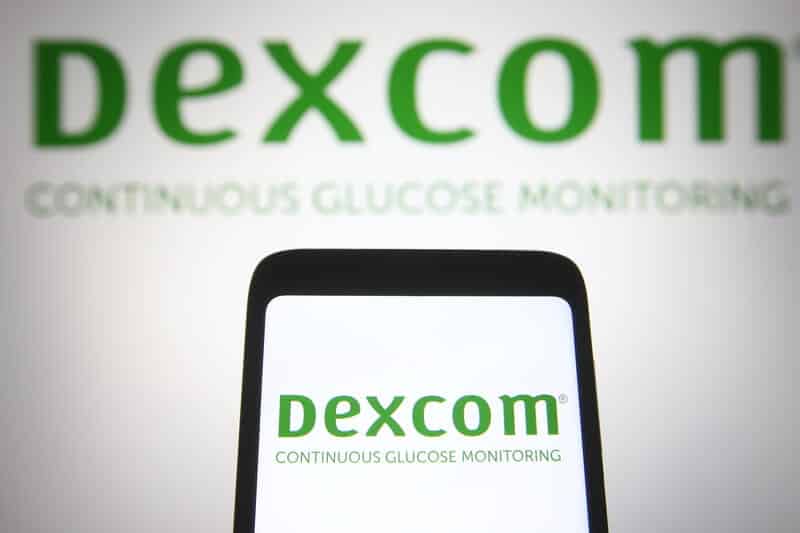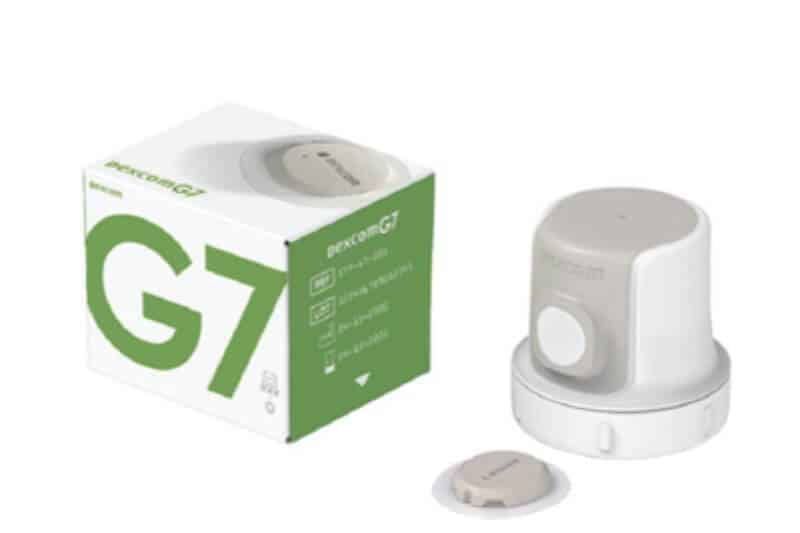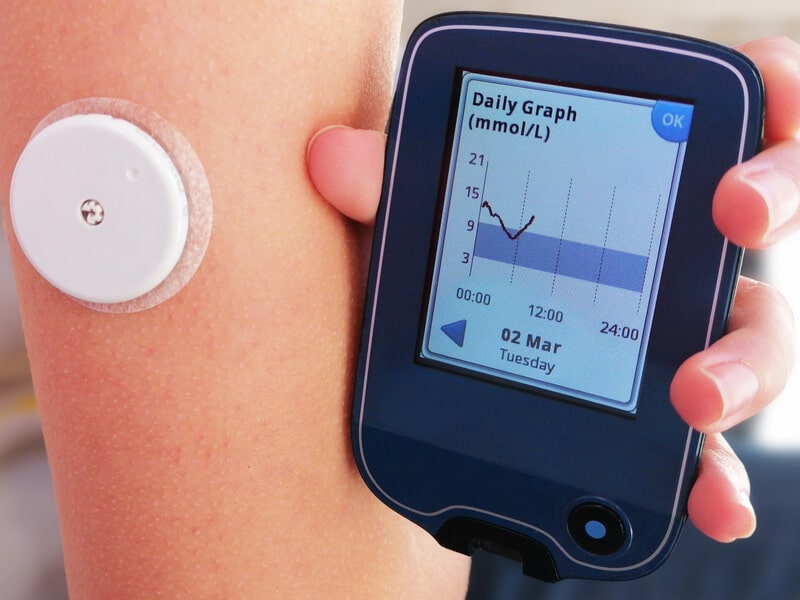
What Is The Difference Between Dexcom G7 And G6
Posted on September 13, 2023 at 03AM
For all people around the world living with diabetes, continuous glucose monitoring (CGM) systems like Dexcom G6 and G7 have become a game-changer in managing blood glucose levels. Dexcom is a well-known brand in the CGM market, offering advanced features that enable people to better manage their diabetes. However, with the recent announcement of the release of the new Dexcom G7, many people are wondering how it compares to its predecessor, the G6. In this article, we’ll dive into the key differences between Dexcom G7 and G6, so you can determine which CGM system in Carson is best suited for your individual needs and will meet your expectations.
What is the Dexcom G7?
The Dexcom G7 is a continuous glucose monitoring (CGM) system designed to help people with diabetes manage their blood sugar levels. It is produced by Dexcom, Inc., a company that specializes in diabetes management technology.
The Dexcom G7 consists of a small, wearable sensor that is inserted just beneath the skin of the user’s abdomen. The sensor continuously measures glucose levels in the interstitial fluid, which is the fluid that surrounds the body’s cells. The data is then transmitted wirelessly to a receiver or mobile app device, where the user can view and share real-time glucose readings, trends, and alerts.
What is the Dexcom G6?
The most recent continuous glucose monitoring (CGM) device, the Dexcom G6, gives people with both type 1 and type 2 diabetes glucose readings every five minutes. The continuous glucose monitoring system is factory calibrated, which means no fingersticks calibrations are necessary. A transmitter, sensor, and display device (receiver or compatible smart device) make up the Dexcom G6. The system has a sleek, covert transmitter and a new, one-touch auto-applicator. A smart device or even the Dexcom receiver receives glucose readings and glucose data from the Dexcom CGM system in Carson. For diabetics aged 2 and older, the Dexcom G6 has been authorized.

What Are the Dexcom G7 and G6 Systems?
The Dexcom G7 and Dexcom G6 are very comparable to one another in general. Both items need users to apply sensors on their bodies using applicators. Without using fingersticks tests, the Dexcom G7 or G6 sensor may assess a user’s blood glucose levels.
But there are some noticeable differences between these devices as well. These are largely connected to the Dexcom G7’s new features, which we’ll break down in more depth below.
Key Difference Between Dexcom G7 And Dexcom G6
Dexcom G7 CGM and G6 CGM are both designed to help people with diabetes manage their blood sugar levels. While both systems have similarities, there are a few key differences between the two:
- Size: The Dexcom G7 sensor is smaller and thinner than the G6, with a 60% reduction in sensor volume and a 70% reduction in sensor thickness. This makes it more comfortable to wear, especially for people who are active or have sensitive skin.
- Sensor life: The G7 sensor has a longer wear time of up to 14 days, while the G6 sensor lasts for up to 10 days. This means that people using the G7 may need to change their sensors less frequently, which can be more convenient and cost-effective in the long run.
- Calibration: The G7 does not require any fingerstick calibrations, while the G6 may require at least two calibrations per day. The G7 uses a new type of algorithm that is designed to be more accurate and reliable without the need for calibration. This can be a big advantage for people who don’t like doing fingerstick tests or who have difficulty getting accurate readings with the G6.
- Insertion: The G7 has a one-button insertion process, which is simpler than the G6’s two-button insertion process. This can make it easier and more intuitive to use, especially for people who are new to CGM systems.
- Compatibility: The G7 is only compatible with Bluetooth-enabled devices, while the G6 is compatible with both Bluetooth and non-Bluetooth devices. This means that people who want to use the G7 will need to have a smartphone or other device with Bluetooth connectivity in order to use the system.
- Availability: As of early 2023, the G7 is not yet widely available, while the G6 is widely available and in use by many people with diabetes. The G7 is expected to become more widely available over time, but it may take some time before it is widely adopted by the diabetes community.
Overall, the Dexcom G7 offers some significant advantages over the G6 in terms of size, sensor life, and calibration, but it may not be as widely available or compatible with as many devices. People with diabetes who are considering a CGM system should talk to their healthcare providers about which option is best for them based on their individual needs and preferences.
Key Features And Benefits Of The Dexcom G6
Individuals respond differently to various CGMs. It may take some trial and error to get your ideal fit, but doing so can be costly, so you’ll benefit from knowing as much as you can up front.
The Dexcom G6 does have a lot of great features and benefits:
- Minimal calibrations needed. Dexcom advises calibrating the G6 once every 24 hours even though it was the first CGM on the market that did not require full blood sugar fingerprick calibrations. Calibrations involve checking your blood sugar levels with a blood glucose meter, comparing the results to the reading from your CGM, and then entering the result into the calibration function of your CGM.
- Long sensor life. The Dexcom G6 can be worn by patients for 10 days.
- Sensor insertion. With just one press of the CGM applicator, patients may insert the sensor.
- Transmitter insertion. Once the sensor has been applied with the applicator, patients can put the transmitter into place.
- Dynamic alert options. Wearers get a 20-minute head’s up before a potentially dangerously low blood sugar occurrence (55 mg/dL). Wearers can also personalize alerts for two timeframes within a day.
In one clinical study that was published in JAMA, it was discovered that after 24 weeks of consistent use, 52% of Dexcom users having type 1 diabetes were able to lower their A1c by 1%. A separate study from 2021 that was released by Diabetes Technology & Therapeutics revealed an even greater reduction in type 2 diabetes sufferers. According to this study, type 2 diabetes patients who were taking mealtime insulin saw an average A1c reduction of 1.4 percent after using G6 for 12 or even more weeks.
According to a third clinical research that was published in Diabetes Care, the G6 helped users increase their time in range, enhance their quality of life, and reduce their A1c over time.

Key Features And Benefits Of The Dexcom G7
Dexcom G7 is an improvement over G6. You can anticipate the following amazing features and advantages:
- Integrated transmitter and sensor. The sensor and transmitter on the G7 model have been fully integrated, in contrast to the G6 model, making the device completely disposable. So, say farewell to your transmitter and its three-month battery life!
- Reduced warm-up time. The G7 will just need 30 minutes to warm up compared to the G6’s 2 hours.
- Longer sensor life. The G7 can be worn by patients for 14 days.
- Smaller sensor size. The G7 is Dexcom’s thinnest device to date and boasts a 60 percent reduction.
- More site options. Users can wear the G7 on their abdomen or upper arm because of its lower size. It can also be worn on the upper buttocks by children ages 2 – 17.
- Excellent accuracy in reading blood sugar. The mean absolute relative difference (MARD) score for the G7 in clinical trials was 8.1% for juvenile users and 8.2% for adult users. “The average of the absolute inaccuracy between all CGM data and matched reference values,” is what MARD informs us. In other words, this enables us to assess the accuracy of our CGM. CGMs that register at less than 10% are usually good.
- Improved accuracy range. In clinical testing, the G7 achieved a range of 93 percent accuracy as opposed to the FDA’s standard of 87 percent.
- App compatibility. According to Dexcom officials, the G7 will work with fitness apps for devices such as the Garmin smartwatch and cycle computer.
- Insulin pump integration. The G7’s integration with Tandem’s Omnipod DASH, Control IQ, as well as the newly FDA-approved Omnipod 5 will be the same as that of the G6. For people who prefer numerous daily injections, Dexcom is also collaborating with Novo and Lilly Nordisk on projects involving their smart insulin pens (MDIs).
- Adjustable Alarms. Additionally, the new CGM has a contentious feature that enables users to temporarily deactivate alerts and modify alert settings. While this may increase the likelihood that people would notice urgent glucose alerts, it also has benefits, including the ability to personalize alarm levels and a decrease in diabetes distress because of the fatigue brought on by frequent alarms.
It’s totally up to you whether you want to use the Dexcom G6 rather than wait for said G7; just don’t put off taking actions that could help you better control your diabetes! If you believe a CGM such as the G6 will accomplish that for you, start exploring. Starting the procedure now will give you enough time to become used to your CGM, manage insurance more efficiently, and navigate learning curves with ease.
Insurance coverage for new diabetes supplies as well as medication is not guaranteed. Follow your instincts, though, if you’re a true early adopter of brand-new technology and still want to wait for the G7. Follow your best judgment.
Dexcom G7 Price
Depending on insurance coverage, the G7 CGM has different costs for various people. Dexcom is still collaborating with Medicare, Medicaid, and private insurers as part of its strategy to increase G7 coverage through 2023.
According to Dexcom, the majority of people having private insurance will spend less than $40 per month, and about one-third of those with private insurance may pay nothing out of pocket for the G7. Over 97% of private insurance will pay for G7, and it is covered by Medicaid and Medicare in 45 states.
Approximately 4.8 million Americans living with diabetes who are using insulin saw the device’s debut during the Super Bowl, of whom 3.3 million do not use a CGM. According to Dexcom, of such 3.3 million, 70% is now covered by Medicaid, Medicare, private insurance or will be by the end of 2023.
Current G6 customers who have private insurance coverage that do not currently cover G7 will be able to purchase the latest CGM at their neighborhood drugstore for $89 per month starting on February 17. With a doctor’s prescription, you can accomplish this using the Simple Start program. The amount a user must pay out-of-pocket will revert to what it was before using G6 once their insurance plan begins to cover G7. Check your insurance coverage and buy G7 through the program if you have never used a Dexcom CGM before.
Dexcom also disclosed on February 13 that G7 would be covered through Medicare. When the new CGM is introduced on the 17th, persons with diabetes who are covered by Medicare will be able to use it. People without CGM insurance or who are unclear of their benefits can verify their coverage at the Dexcom Savings Center or sign up for the drugstore savings program, which lowers the cost of CGM by $200 per month.
Dexcom g7 vs. g6: Which is better for you?
If you’re considering a Dexcom CGM system, you may be wondering whether the Dexcom G7 or G6 is right for you. Both systems have their pros and cons, and it’s important to weigh those carefully before making a decision.
The Dexcom G7 is the newest model, and it offers some advantages over the G6. For one thing, it has a longer sensor life, so you won’t need to replace it as often. It also transmits data more frequently, so you’ll have a better idea of what your glucose levels are doing at all times. On the downside, the G7 is more expensive than the G6, and it’s not compatible with as many devices.
The Dexcom G6, on the other hand, is less expensive and more widely compatible. However, its sensor life is shorter, and it doesn’t transmit data as frequently. So, if you’re looking for the most affordable option or the one that will work with your existing devices, the G6 may be the better choice for you. Ultimately, though, it’s important to choose the system that will best meet your needs.
Where is G7 available now?
All people ages 2 and up can currently purchase a Dexcom G7 in some countries like Ireland, Germany, the United Kingdom, Hong Kong, and Austria. In addition, an announcement from Dexcom officially said that the entire US release of G7 will start on February 17 following FDA approval.
Conclusion
In conclusion, the Dexcom G7 CGM and G6 CGM are both advanced that provide accurate and real-time readings of blood glucose levels for people living with diabetes. While both devices share many similarities in terms of functionality and features, the Dexcom G7 offers several significant improvements over its predecessor, the G6, including a smaller sensor size, longer sensor life, and improved accuracy. Additionally, the G7 eliminates the need for a separate transmitter device, making it more streamlined and easier to use. Overall, while both the G7 and G6 are effective glucose monitoring systems, the G7 offers several key advantages that may make it the preferred choice for many people with diabetes.
If your healthcare providers already gave you clearance for such G6 or G7 CGM as your diabetes treatment decisions and take the next step on considering buying one, look no further at More Cash for Test Strips. For more questions or information, call us on (301) 892-2808.

